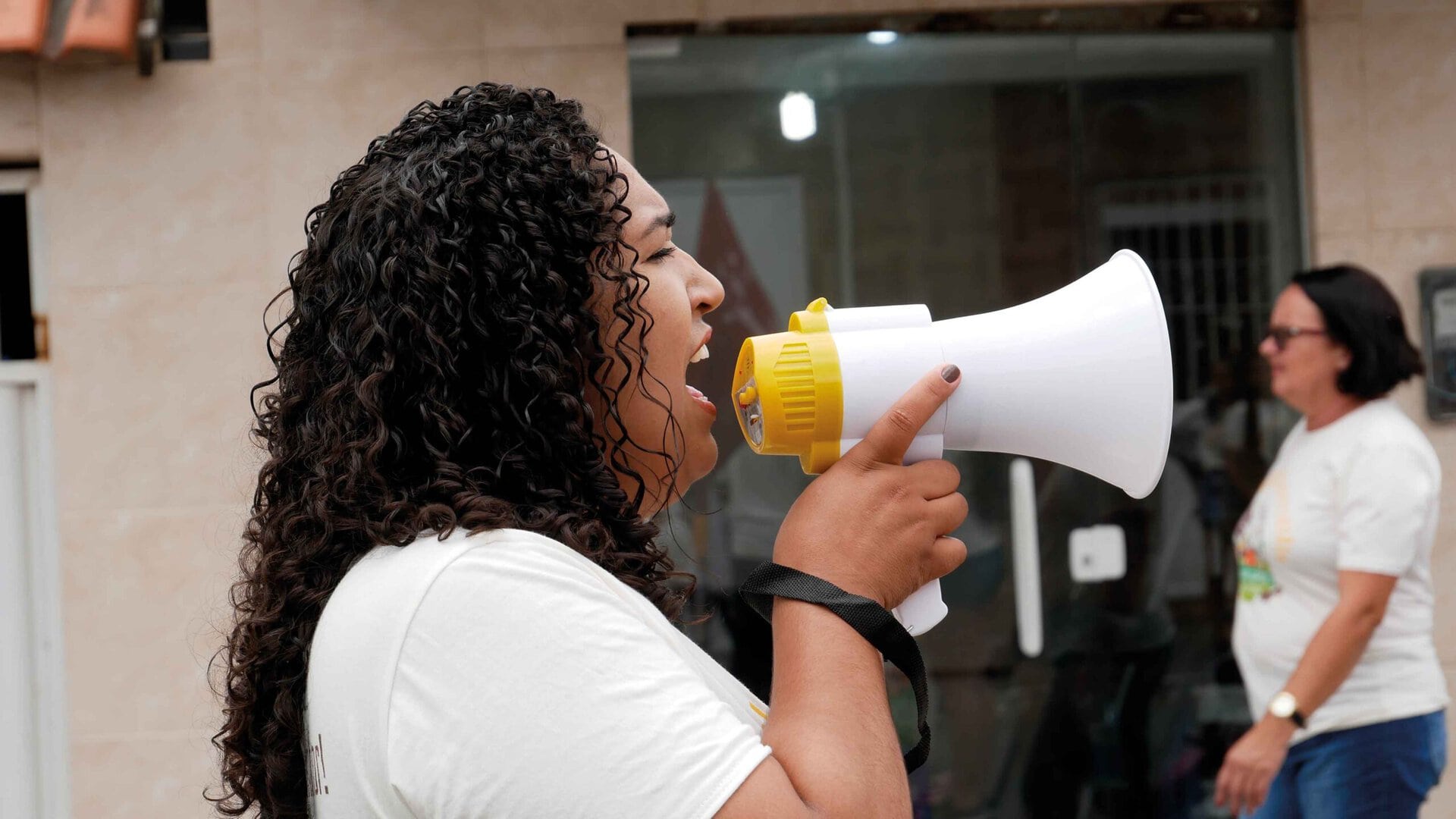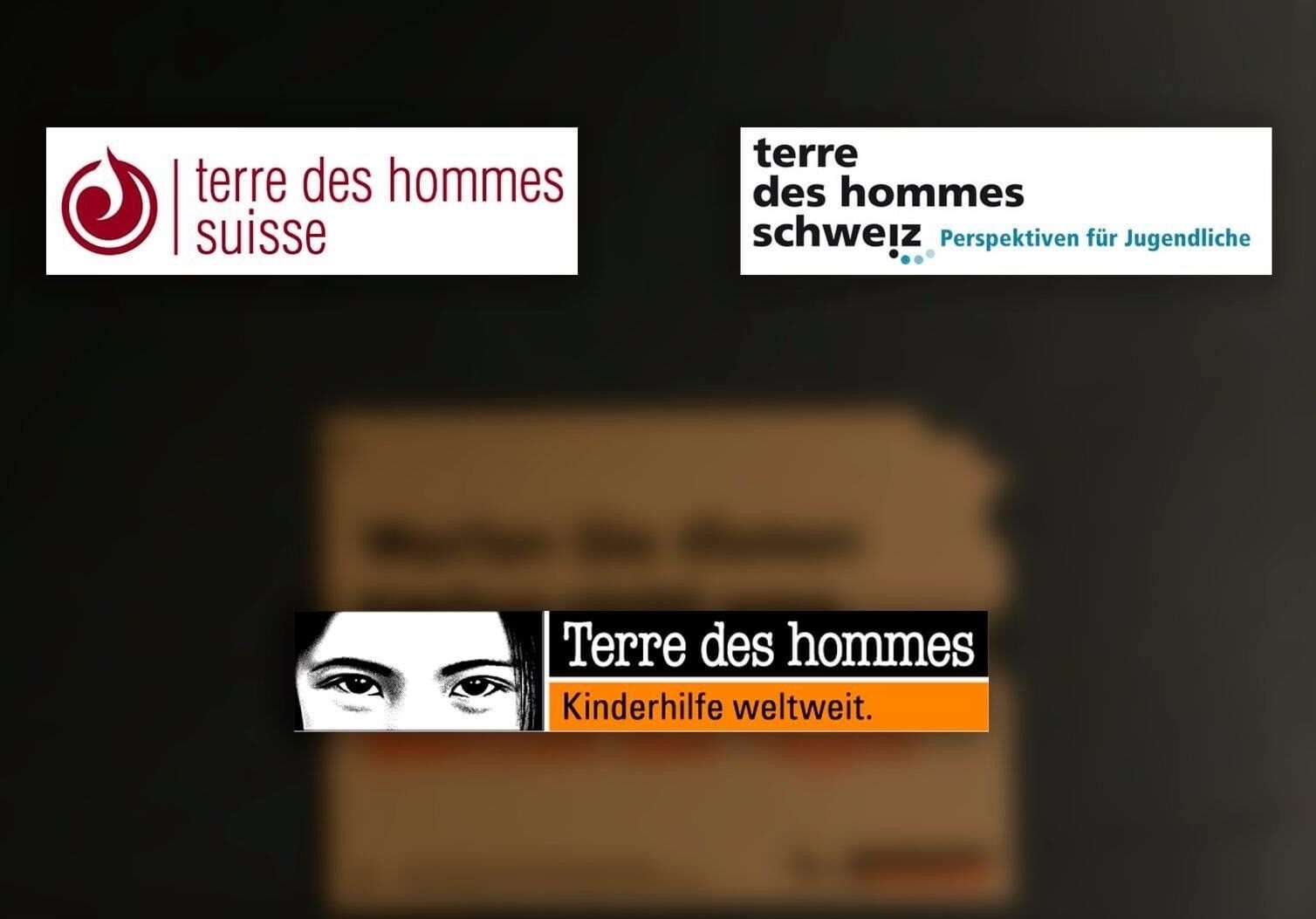In a workshop at the end of April as part of the Tour de Lorraine in Bern, we tried out methods of craftivism, i.e. how handicrafts and activism go together. The Brazilian artist Eva de Souza shared her rich experience of textile art as a form of expression in resistance to violence with us. We learned a lot about the power of creativity for social change.
“I often feel powerless and sad in the face of the many crises in our world. That blocks me,” said one of the participants in a relaxed exchange while we were all embroidering. Eva de Souza knows these feelings only too well. In her home country of Salvador in Brazil, she has always been confronted with major social problems. Police violence, discrimination and deadly gun violence are part of everyday life, and the brutal horrors of colonialism and racism continue to have an impact. “For me, embroidery is a way to process the violence, to express the pain and thus also to heal.” Eva wears a suit jacket that is wildly embroidered with the names of victims of police violence, a silent memorial against forgetting. “When I embroider, I can calm down, feelings of anxiety and blockages subside. I can do something concrete,” says the artist, describing her experience. And this is exactly what everyone felt during the two-hour workshop. The participants were invited to embroider words or symbols on a small piece of fabric that expressed what had touched them most during the various events on the Tour de Lorraine on the topic of “War and Peace”. An embroidered essence of the experience. Some deliberately embroidered positive words expressing a longing for utopia or simply “life is beautiful” as a counterpoint to the many major challenges of our time. Others expressed their overload and sadness. Working together created a calm, cozy and peaceful atmosphere. Embroidery became a vehicle for openly sharing what moves us. In this short time, we experienced solidarity within the group and shared many personal things. The exchange went deeper than in the usual discussions and debates. There was more room for feelings.
It is precisely this effect that authors of the craftivism movement describe as the strength of this approach. Craftivism is a combination of the words craft and activism. As Sophie Freeman of craftivist collective writes “Craftivism is a way of expressing your opinion through creativity that strengthens your voice, deepens compassion and helps to build connections through shared creative practice. “1 We know this from our partner organizations in Latin America, where these approaches have a long tradition. In the 1970s, women’s groups in Chile used tapestries to express their resistance to the Pinochet dictatorship. Today, people affected by dam projects use craftivism approaches as a silent form of protest.

In our workshop during the Tour der Lorraine, it became tangible: creative methods create low-threshold meeting formats where we can get out of our bubbles and meet on a human level. It is not so much the designed product that is decisive, but the shared process. In an age of digitalization and fast pace, this form of quiet activism helps us to slow down. Instead of being overwhelmed by the constant flood of information, we take the time to “take action together against injustice”, as one of the participants put it. This can help to strengthen our resilience in the face of multiple social crises.
Sources
1 How we define Craftivism: by Sophie Freeman – Craftivist Collective (craftivist-collective.com)



